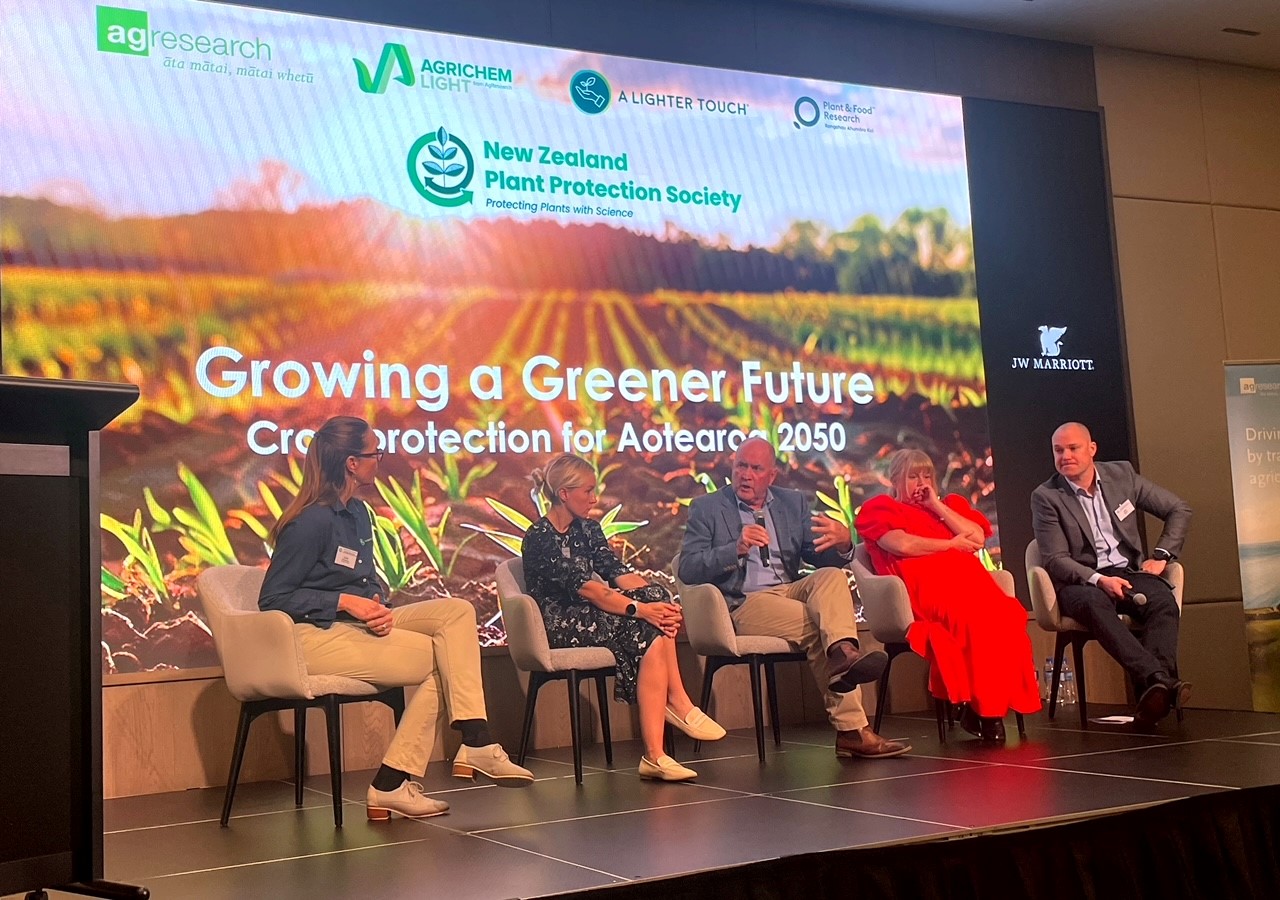From biologicals to tech, there’s a vast range of new crop protection tools coming down the pipeline, but the key will be using them in an integrated programme, not looking for a single silver bullet.
That was one of the take home messages from the New Zealand Plant Protection Society symposium Growing a Greener Future, Crop Protection for Aotearoa 2050, co-hosted by A Lighter Touch, AgResearch and The New Zealand Institute for Plant and Food Research Limited.
Held in Auckland on August 12, the symposium attracted about 130 attendees representing more than 50 different organisations, including crown research institutes and universities, government agencies, industry bodies, manufacturers and retailers, technology developers, agronomists, advisors and many more.
Clear themes emerged from the symposium, with a focus on the importance of collaboration and partnership. Speakers discussed the importance of scientists, industry, government and Māori working together to enable innovative crop protection tools to be developed for growers and farmers.
Opening session speaker Barry O’Neil, chair of Horticulture New Zealand, highlighted the need for development of integrated pest management (IPM) systems for all crops, a change in grower practice which would help mitigate problems with agrichemical resistance.

Horticulture NZ chair Barry O’Neil
He cited A Lighter Touch as an example of industry and government partnering to support a shift to an agroecological approach to crop protection, but said grower education and support would be required to achieve this change, given the greater complexity of an IPM approach.
New technologies were the key to achieving this shift to IPM, including next generation pest control tools ranging from biological controls and the use of artificial intelligence and robotics, through to manipulating insect behaviour using biotremology.
Precision plant breeding has the potential to play a vital role in speeding up the ability to breed resilient crops, and Barry noted the need for a full industry discussion on regulatory barriers stopping new sustainable innovation, both in terms of genetic technologies and also the approvals process for novel tools.
The need for improvements to the New Zealand regulatory system was a topic discussed by many speakers, though A Lighter Touch programme director Livia Esterhazy told symposium delegates that regulators globally were reporting being challenged by the pace and volume of new biological crop protection products requiring assessment. The exception was Brazil where a redesign of their regulatory approvals process now enabled the processing of new products in 8-12 months, resulting in about 500 new biopesticides having been registered in the past nine years.
Symposium closing speaker Alison Stewart, chief executive of the Foundation of Arable Research, told attendees the biggest challenge was not in the discovery of new crop protection solutions, but in ensuring their uptake by growers.

FAR chief executive Alison Stewart
There needed to be a clear value proposition for growers, something that had hindered adoption previously. The drivers were now much more pressing, with resistance development, regulatory change and market access requirements all impacting on the tools in the grower’s toolbox.
However, with the exception of those growing for high value export markets, many growers were several steps removed from overseas market requirements. As long as existing products kept working many would remain resistant to changing their practice, and would require clear and consistent messages from their levy organisations that “we can’t keep doing what we’ve always done.”
In addition, the complexity IPM and its more time-intensive nature meant greater investment was required in demonstration, and educating growers in the use of new crop protection tools. This was something that had been overlooked in the past, where there had been investment in research, but a lack of funding for extension to growers meant solutions sat on the shelf.
Alison called for better collaboration and co-ordination across all organisations with an interest in crop protection to ensure the mistakes of the past were not repeated.
